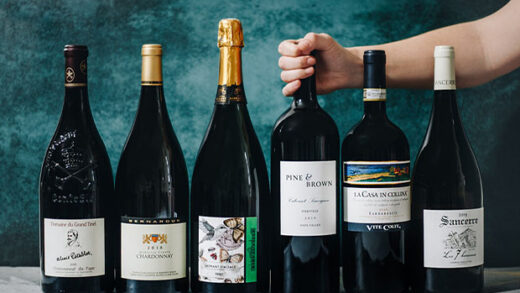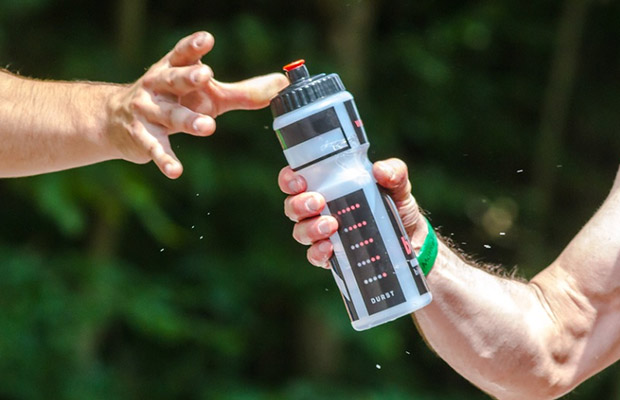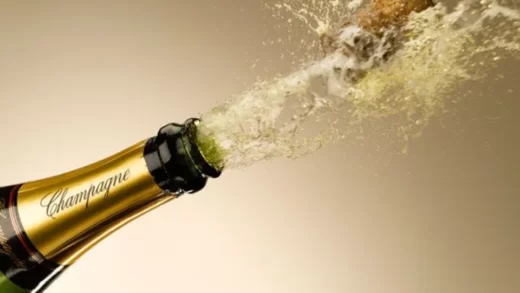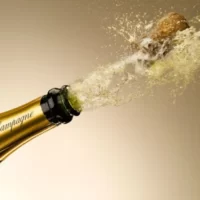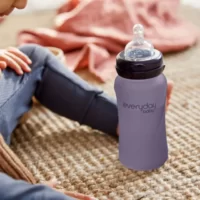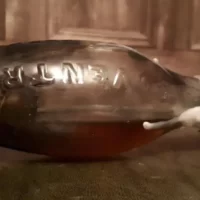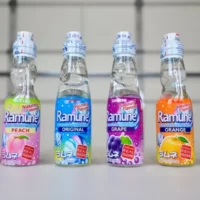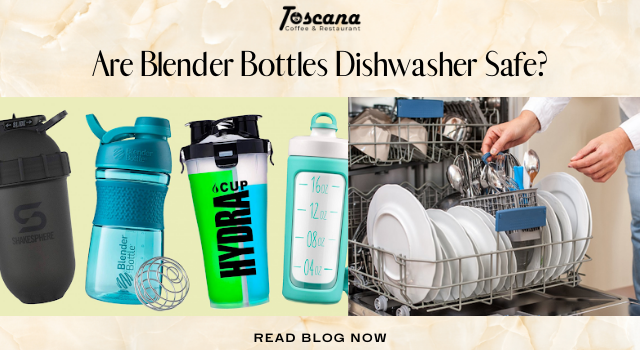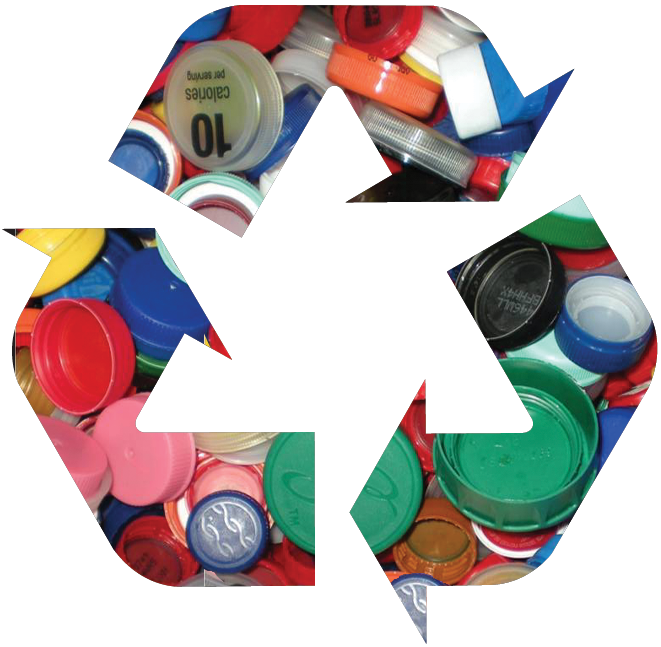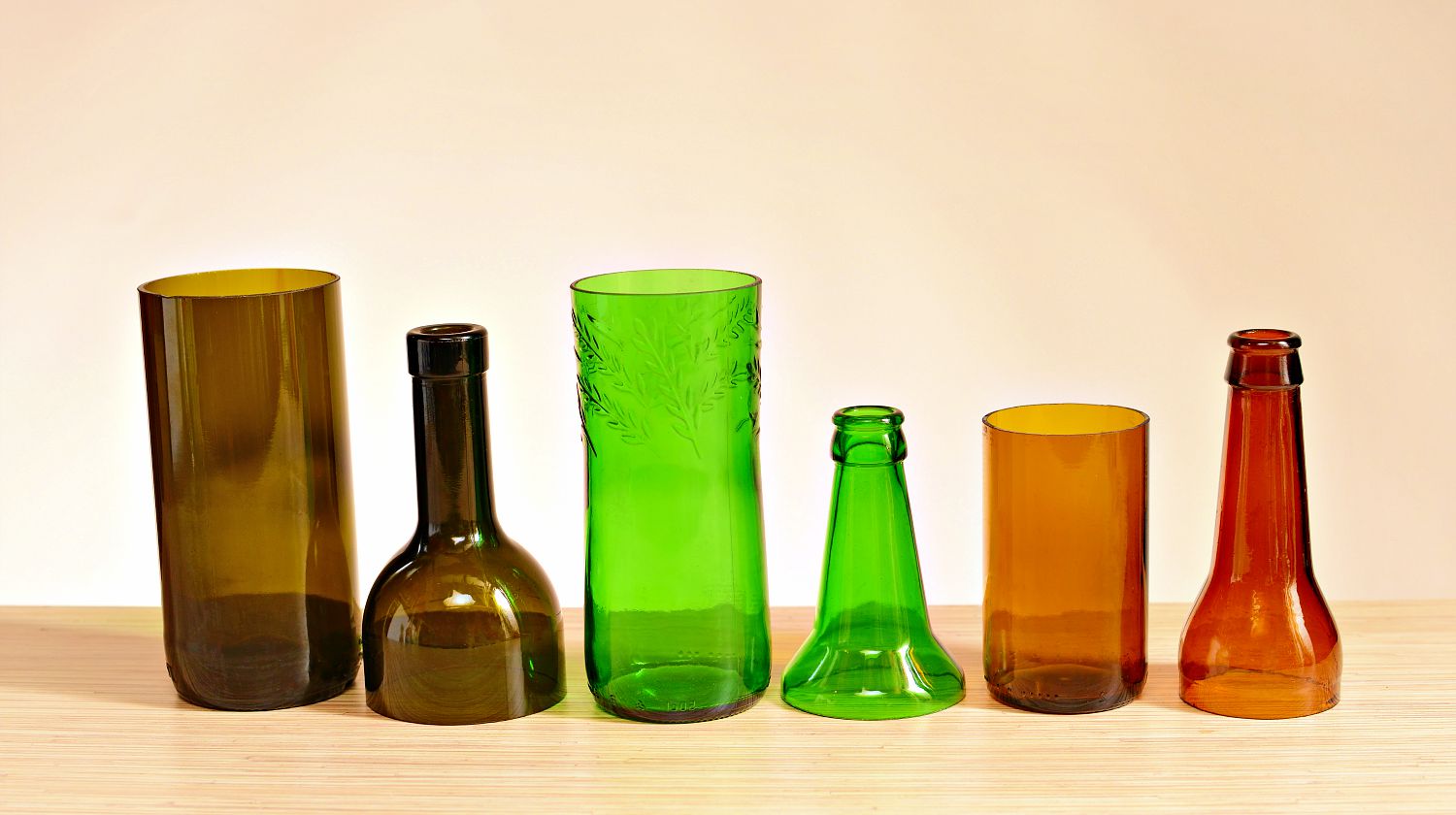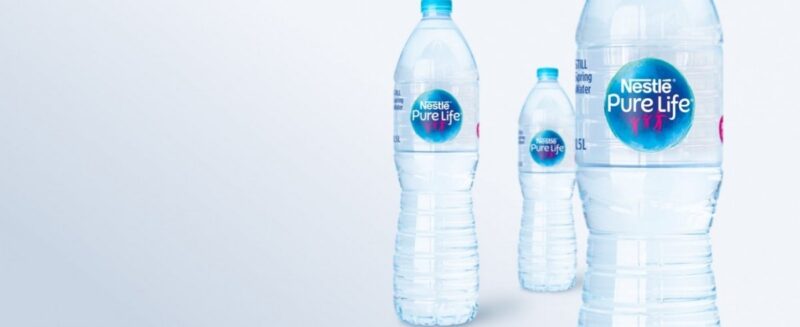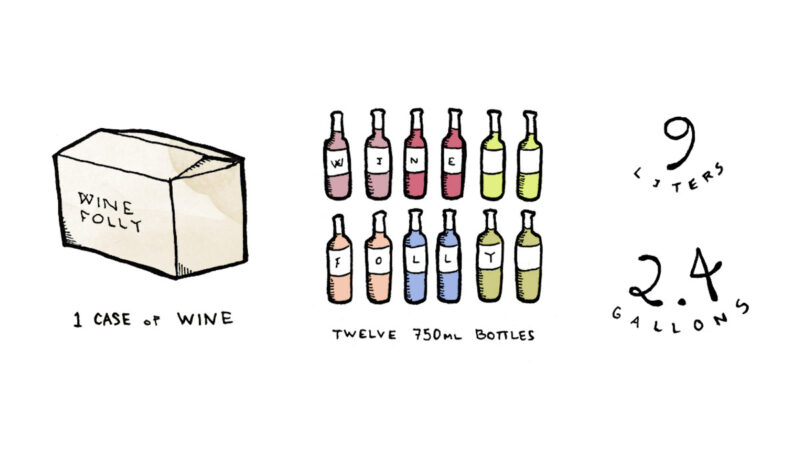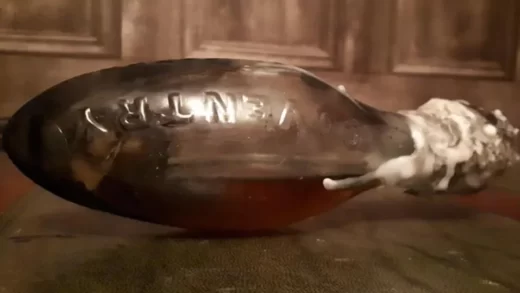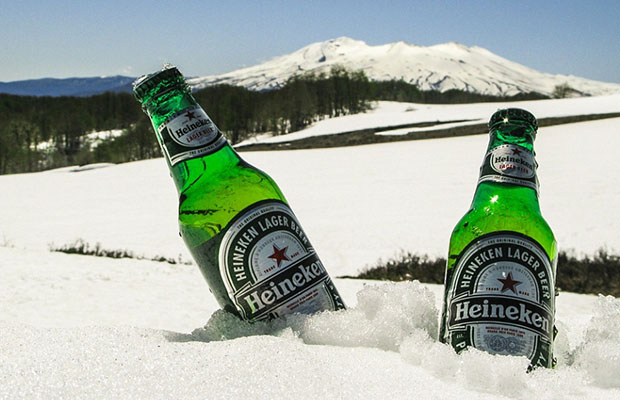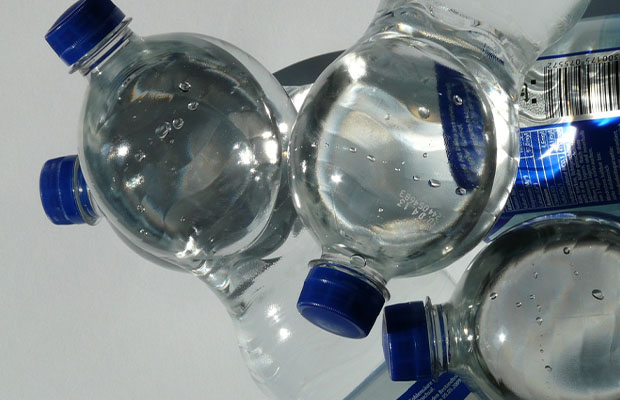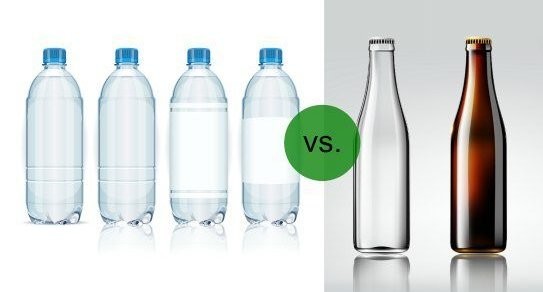How to open a champagne bottle? A proper chilling temperature for the champagne or sparkling wine should be around 45 degrees Fahrenheit.
The cork needs to be held firmly in place while being twisted out of the bottle. If you don’t want a champagne shower, hold onto the cork tightly!
Keep reading, we not only introduce how to open a champagne bottle but also explains how to serve and store Champagne.
Table of Contents
How To Open Champagne?
- STEP 1: Rotate the tab six half turns to release the cage. Don’t remove it yet; just loosen it enough to fit over the bottle’s lip. Keep holding the cage and cork in place with your hand even though they are no longer securely fastened.
- STEP 2: While firmly grasping the cork and cage, hold the champagne bottle at a 45° angle and begin to rotate the base of the bottle. This will be much simpler and safer than attempting to rotate the cork/cage.
- STEP 3: As the cork begins to start pushing out with the pressure of the bottle, apply more and more pressure to hold the cork or cage. Not to worry, if you do this process slowly, the cork will pop out with just a little “fssssszzz”
Related Reading: How Many Glasses in Bottle Champagne?
Important Tips
- Be sure the bottle is chilled to 42-48°F (it’ll taste better that way)
- Make sure the bottle is dry so you have a good grip
- Point the cork end of the bottle away from yourself and others
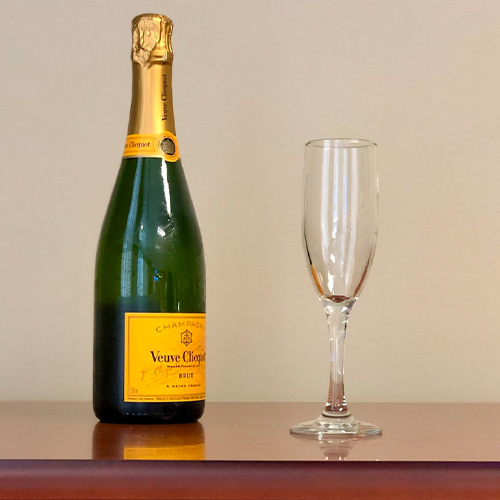
How To Serve Champagne?
It’s time to start pouring now! The highlight is this.
Once the champagne bottle has been uncorked (and no one was harmed in the process), you can begin pouring. You might believe that you can simply use any champagne glass at this point. Depending on what you’re drinking, there are advantages and disadvantages to using a flute, coupe, or tulip-style of a champagne glass. Here’s why it actually matters how you sip your champagne.
Flute Glass (Left)
The tall, narrow bowl of flute glass is actually a clever design in addition to looking sexy and sleek. The narrow bowl aids in the carbonation retention process by minimizing the surface area through which bubbles can escape. This is crucial because, in addition to showcasing the pretty bubbles as they rise, it controls the amount of oxygen that mixes with the champagne. All of those tiny bubbles are also ensuring an effervescent mouthfeel and delivering the aroma of the champagne directly to the nose. Suitable for serving dry champagnes.
Coupe Glass (Center)
The most traditional and recognizable champagne glass is the coupe. A softer and fruitier-tasting champagne results from allowing more bubbles to quickly disperse in this vintage beauty’s shallow, wide, open bowl. For sweeter, sparkling wines, it is the ideal vessel.
Tulip Glass (Right)
With a similar build but a wider body and mouth, the tulip glass is the flute’s curvier cousin. Although it offers some of the same advantages as flute glass (allowing more aroma to be released without losing much of the carbonation), the tulip shape makes it perfect for fruitier, more aromatic sparkling wines.
How To Store Leftover Champagne?
You realize that you didn’t quite finish that last bottle after the celebration is over and the guests have left. However, nobody wants to waste perfectly good champagne! Champagne that has been opened can be kept; it all depends on how you go about it.
A bottle that has been opened will keep in the fridge for one to three days, but it’s best to drink it all up right away because the carbonation will start to go away after a day or two. There are a lot of theories and methods, but these are our tried-and-true tips for storing a bottle of champagne so that it stays fresh:
- Refrigerate the bottle after opening it. It must stay cold at all times!
- Use a hermetic (airtight) stopper cork to re-cork the bottle
- If you don’t have a stopper, place the long end of a metal spoon into the bottle
- Or, cover the top of the bottle with plastic wrap
You May Also Like:

